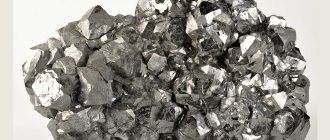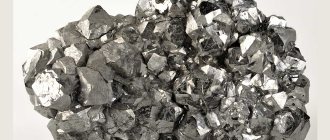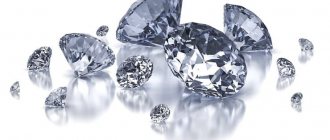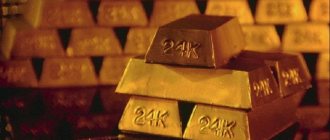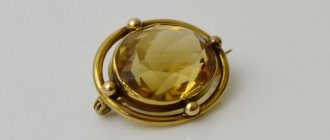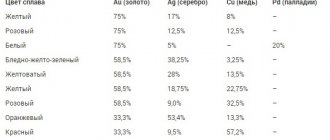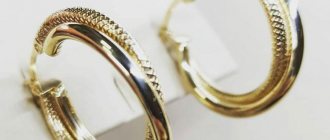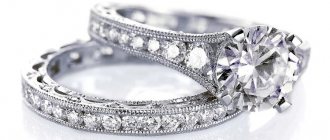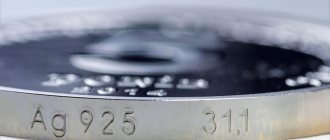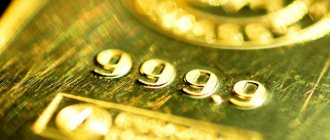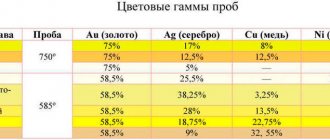| Silver sample | Price per gram |
| 750 silver | 15-18 |
| 800 silver | 18-21 |
| 875 silver | 46 |
| 900 silver | 22-35 |
| Sterling Silver | 49 |
| 999 silver | 53 |
| Silver 84 samples (royal) | 46-100 |
The cost of any silver product is, of course, significantly less than gold, but there is no need to be disappointed and underestimate such a valuable metal, as well as products made from it. Of course, selling a silver product, for example a chain, which has a net weight of 10 grams is pointless, but generally, silver is bought at a high price if it is spoons, forks, and also glass holders, in which case you can really get rich and sell silver in Moscow. If you cannot determine whether your product has a hallmark, at any time you can call us at the indicated phone numbers, write, or come, and then we will be able to analyze the silver product on the spot, as well as its price. You can find out more details about the prices that are current today on our website in the price list. The pricing policy is regularly updated, since it directly depends on the price of precious metals on the exchange, so it is worth keeping an eye on the current prices on our page.
What is silver hallmark?
Silver is one of the noble metals that are not susceptible to oxidation or corrosion. In the periodic table D.I. Mendeleev's silver is designated Ag (from the Latin Argentum) and is listed at number 47. It is a silver-white metal characterized by high ductility.
Pure silver is quite soft, so it is not suitable for the production of dishes, jewelry and other products. To prevent silver from bending and breaking, other metals are added to it. Since the amount of such impurities has varied since the beginning of silver production, it became necessary to introduce the concept of “fineness.”
The sample shows how much silver is contained in a particular alloy. For example, 800 fineness means that 1000 g of alloy contains 800 g of silver and 200 g of impurities. In the future, this information is used to use specific silver alloy samples for the production of certain products. For example, 800 hallmark is more suitable for making cutlery, while 925 hallmark is used for jewelry (more on this below). Hallmark is also a name stamped on a silver item.
Brand A.M. Postnikov on a silver item.
Types of silver samples
Copper is usually used as the main element of a silver alloy. The copper content in the alloy makes it more durable, but at the same time the product becomes yellow and darkens over time when exposed to air. The more copper it contains, the more intense the darkening of silver occurs.
The table below shows the most common metric hallmarks of silver. This system operates in Russia and the CIS countries, in Germany, France and those states that have signed the Convention on the Control and Hallmarking of Precious Metal Products.
| Try | Silver, g | Copper, g | Manufactured products |
| 800 | 800 | 200 | Cutlery |
| 830 | 830 | 170 | Cutlery, inexpensive jewelry |
| 875 | 875 | 125 | Interior decorations, dishes, jewelry |
| 925 | 925 | 75 | Jewelry, interior decorations, expensive cutlery, coins, memorial signs |
| 960 | 960 | 40 | Jewelry and highly artistic decor |
Characteristics of silver samples
800th sample. This is a high-strength alloy characterized by good casting properties. However, silver of this standard is subject to rapid oxidation (darkens in air) and, due to the high copper content, has a yellow tint, which is why it is used for making cutlery, but not for jewelry. It is also called yellow silver.
830th sample. The presence of an extra 30 grams of silver in every kilogram of the alloy makes it more suitable for making jewelry. Due to the low silver content, jewelry of this standard is cheaper, but its properties leave much to be desired. They also oxidize quickly.
875th sample. This grade of silver is great for cutlery, but for jewelry, the silver alloy still contains too much copper. Although, in comparison with the 800th standard, such silver does not have a characteristic yellow tint, it loses its beauty over time and is difficult to machine.
925th sample. Silver of this standard, also called standard or sterling, is most common in jewelry production. This is due to the fact that a large amount of silver in the alloy makes it flexible and beautiful enough to create products of the most bizarre shapes. At the same time, the presence of 75 grams of copper does not give the silver a yellow tint and at the same time makes the alloy more durable than pure silver. 925 silver may be confused with gold because sterling silver jewelry is often plated with gold. To avoid confusion, it is enough to know that gold does not have such a standard.
960th sample. Silver of this standard is considered high quality and is used for jewelry. Since it is very soft, it makes jewelry and decorative items that require the finest artistic work. The price to pay for such an amount of silver in the alloy is that the finished products are easily scratched and damaged. To make the product more durable, it is enameled.
999th sample
. Because pure silver is too soft and subject to deformation during use, it is not used to make jewelry. In everyday life, silver of the highest standard is used in the production of solders, as well as for the manufacture of parts for various devices. It can also be found in jars in the form of silver bars. In some countries, such as Japan, pure silver is used in magical rituals.
Pure 999 silver bar.
There are other standards in the metric measurement system (see table below). For example, in Soviet times, sample 916 with a characteristic stamp shape in the form of a barrel was common. It was used to make jewelry, dishes, candlesticks and items for various rituals. Today this test is not used.
Cognac set made of 916 sterling silver. Enamel, gilding. Russia. 1960s
916 hallmark in the form of a barrel.
A low-grade silver alloy, in which less than 80% silver is present (fineness below 800), is called technical. It is typically used in industry, such as circuit board manufacturing.
At what price per gram is silver sold, what determines the cost of the product
Sample, of course, plays one of the most significant roles in order to adequately analyze and evaluate a silver product, as well as its value.
The main criteria for assessing the value of a silver product:
- Trademark. If your silver jewelry belongs to the luxury class, it will a priori have a high cost and will be sold two to three times more expensive than little-known brands, especially if you were able to save the packaging and documents of the jewelry, which confirm the high cost of the product, thanks to the recognizable logo on the packaging .
- Antiques. Today, old jewelry has a high value, as well as knives, forks and interior parts. Some of the rarest specimens are not melted down, but are left for collectors in the form in which such goods were received. It is precisely because of this that silver can be sold in Moscow at a very high price, especially if it is more than 50 or 70 years old.
- Equipment. If the set is complete (earrings + pendant + bracelet + ring or a complete set of cutlery), the cost will also be quite decent. Even if the item is branded, but does not have a complete set, it will most likely be assessed as scrap.
- Condition and appearance of the metal. If the silver is not damaged and has no additions, it will be valued significantly higher than other versions of items with defects. This is especially true for luxury jewelry, which has artistic value as a piece of jewelry.
Is it profitable to sell silver products?
There is an opinion that people resort to extreme measures when they sell silver, because in this way they are trying to stabilize their financial situation while in crisis or on the verge of complete bankruptcy. A similar stereotype is associated with the concept of “scrap silver” - this is what jewelry is called if it is not of particular value and may only be needed for melting down to create new products. But most often their price is very meager, since the weight of this type of silver is not particularly large. It is also worth remembering that in addition to products, we accept dishes, watches, coins and other antiques that may interest us in order to sell silver at a high price in Moscow. But, of course, the leader remains jewelry, which is often sold to pawn shops at a high cost. Indeed, today many people believe that buying jewelry is not only a way to decorate your interior and appearance, but also an excellent way to make a profitable investment. And this approach is really promising, since money tends to depreciate, unlike precious metals, which can be sold over time at a more decent price, since it will increase in the long term. Another profitable option is to sell silver bars, because banks do not always accept them back, this may be due to the loss of a certificate, or if various scratches and other defects appear on the surface of the bar. In such cases, buying silver at a high price from us is a real salvation, especially if the bullion is heavy. Also, selling scrap silver can be a profitable venture for you, because if the product weighs at least 500 grams, it will bring you significant profit. It is for this reason that it is worth handing over precious metals in large quantities to be sure that the price for them will be high, compared with a couple of simple modern jewelry.
Other sample systems
The product catalog on our website contains antique silver items of 84 standard, which can simply be puzzling. Is it really possible to create products with only 84 grams of silver per kilogram of alloy? In fact, this sample is specified in a different measurement system. Until 1927, in Russia there was a so-called spool sampling system, measured in spools. If we convert it to the metric system, then the 84th hallmark will correspond to the 875th hallmark of silver (see table below).
Ladle made of 84-carat silver. Gilding inside. Russian empire. 1881
Hallmark of 84th silver standard.
Silver samples in different measurement systems.
Varieties of silver
Even in ancient times, it was noted that not only its quality, but also its appearance depended on the composition of the silver alloy. This is how various types of alloys appeared, as well as different methods of processing finished products, which are very popular in the production of silver products.
Blackened silver
In Ancient Rus', even before the advent of our era, they discovered a method of blackening silver, when products were covered with beautiful black patterns. By mixing silver, copper, lead and sulfur in certain proportions, the so-called niello was obtained. After engraving the silver item, it was heated until the niello was completely dissolved and turned black. The result was an interesting combination of dark and light shades.
Liquor set made of blackened 875 silver. USSR, Northern Chern. 1966
At first, blackened silver was used mainly to create amulets and elixirs, but with the heyday of blackening in the 17th century, engravings, cigarette cases, dishes and other products began to appear, which were considered very fashionable to have. A special feature of blackened silver is its strength. Products made from it do not need cleaning.
Oxidized silver
The combination of silver with sulfur also leads to darkening of the noble metal, but this combination has its own characteristics. While blackened silver is a strong compound, the same cannot be said about oxidized silver. The darkening effect here is created using a special film, which is easily damaged during the cleaning process. Therefore, you need to carefully inspect the product when purchasing, so as not to buy oxidized silver instead of blackened silver.
It is worth noting that both methods of processing silver have their own jewelry value. In particular, oxidation allows you to play with shades of black and even purple, giving the product not only the effect of antiquity and nobility, but also making it more colorful. After polishing, the convex parts of the oxidized silver product become shiny, and the concave parts become dark.
Ring made of oxidized silver. Convex and concave areas have different shades.
Typically, oxidized silver is used to create small-sized jewelry. These can be handmade earrings, chains or bracelets, as well as products in need of restoration. Since blackened and oxidized silver are practically the same in price, the buyer decides for himself which material to choose.
Matte silver
Matte silver has a noble appearance and is resistant to tarnishing. The natural shine of silver is removed using special equipment such as a sandblaster, as well as by etching in certain solutions.
Silver egg-purse. Enamel on filigree. Russian empire. 1908-1917
Gilt silver
Spraying silver with a thin layer of gold gives the silver item not only a luxurious appearance, but also increases its chemical resistance. Gold-plated silver cutlery is suitable for salty and acidic environments where regular silver would react chemically.
Gilded milk jug. 950 standard silver. France. End of the 19th century
There are other varieties of silver obtained using different techniques and substances.
How to correctly determine the price of the 525th sample per gram?
The karat counting system does not specifically provide for this test, however, this is not a problem. There is a simple mathematical calculation to find out the price per 1 gram of this gold alloy:
It is required to multiply the price of one gram of pure gold by our fineness indicator, in our case it will be 0.525;
It is worth remembering that the composition of the alloy also affects the final cost, since silver in the alloy will always be more expensive than copper or nickel. In addition, Platinum is extremely expensive, and its presence even in such an affordable 525 standard increases the price of jewelry significantly.
All purchased jewelry will have a stamp, a sign of quality, indicating what it is made from. There must be such a sign, since it confirms the authenticity of the jewelry and this is a requirement established by quality standards. Sometimes, in place of the mark, a cork with all the necessary characteristics of the jewelry is placed.
Now the average price for 1 gram of pure metal without impurities, that is, yellow gold, is approximately $40!
Carat system
Based on this formula, we get: 1 carat corresponds to 124 masses of the alloy according to the accepted British system. By the way, in Russia they began to use this system only in 1927 and not for a long time, giving preference to the metric system.
Metric system
It is much lighter, more practical, and therefore more popular, which indicates its prevalence throughout the world. Russia came to it in the first years of the 20th century. Since then, absolutely all gold receives its sample as provided for specifically by this system.
Gold products may differ in the properties of the metal, in the direction of strength and durability, having a higher percentage of alloy, or be from purer and more expensive samples. The amount of gold in the alloy regulates its price, and potential jewelry works, which not all can be realized from the material - plasticine.
It is worth noting that the composition of the alloy is not only: nickel, chromium, copper, aluminum, but also most of it is silver, which produces other types of precious metals, for example, white gold.
Properties of metals
The properties directly depend on the composition and amount of the ligature and are as follows:
- with the help of palladium, ductility and elasticity increases;
- zinc increases fluidity during casting;
- metal oxidizes quickly, and aluminum increases oxidation resistance;
- The presence of nickel increases strength and rigidity.
Authenticity of silver products
There are quite a lot of fake silver items on the market, which may have “branded” hallmarks (hallmarks). The great demand for such products is due to the fact that many buyers have no idea what a sample should actually look like. They already consider the presence of such a sample to be sufficient reason to believe in the authenticity of the product. At the same time, for counterfeiters, stamping is not a particularly big problem. But a professional will always be able to distinguish a fake brand from a real one.
Fake samples
To determine the authenticity of a particular mark, you need to at least know the specifics of the forgery process itself. Fake products are often made of soft metals, so the marks have softer contours.
When determining the authenticity of a hallmark on an antique silver product, it is necessary to take into account the specifics of production. Fraudsters often do not take into account that this or that sample was used only in specific years of production, and was also placed in certain places of branding. For example, in Russia, silver was stamped with an image of a woman’s head in a kokoshnik, a digital hallmark and the letter of the state inspectorate. At first, the woman's face was turned to the left, but since 1908 it has been turned in the opposite direction. Also, in different years, product marks were placed in different places.
Sample with the image of a woman in a kokoshnik (turned to the left). The product was produced in the period 1899-1908.
Sample with the image of a woman in a kokoshnik (turned to the right). The product was produced at the end of the 19th century. – early 20th century
In addition, different countries have their own standards, which also need to be taken into account when working with the sample. For example, English silver hallmarks have their own characteristics compared to French or Russian hallmarks.
One of the common techniques used by counterfeit manufacturers is to transfer the original mark from one item to another. In particular, it can be taken from a spoon and soldered to an expensive antique silver item. Professionals skillfully hide the soldering area under the engraving. And yet, upon closer examination, traces of soldering can be detected, especially if you breathe on this place.
Upon careful examination of the product under a magnifying glass, you can also notice a difference in the wear of the stamp and the product itself, which also indicates a fake.
At the same time, high-quality fakes can only be identified by professionals using special equipment. It allows you to detect both an alloy composition that is uncharacteristic for a particular production period and a lack of protection. Information about the degrees of protection is contained in the technical documentation for the mark and is under state protection.
How to determine the authenticity of silver
The authenticity of a silver item should be determined by an expert, especially if we are talking about antiques. However, at home you can always conduct simple experiments that will allow you to suspect a fake.
If a silver product is magnetic, then this is a fake, since silver never magnetizes. At the same time, the absence of interaction with a magnet does not prove its authenticity, since some metals and alloys are also not magnetic.
The presence of another metal under the silver can also be a clear sign of a fake. It is enough to make a scratch with a sharp object to find out.
If the product does not become hot when placed in hot water for a few seconds, it means it contains metals with low thermal conductivity. Silver heats up instantly, as it has high thermal conductivity.
If a silver item gets your hands dirty, it contains a lot of zinc. In such cases, cunning sellers like to come up with various excuses, for example, that the person whose hands were dirty with a silver amulet is damaged.
It is worth taking a closer look at the quality of the product itself. For example, if we are talking about a silver chain, then every detail of a branded item is carefully worked out. At the same time, a fake usually contains small elements of low quality or enlarged to simplify production. On counterfeit products, the locks may not close properly, and individual elements may have uneven edges or irregular shapes. It is also possible for the links to break, their length and shape to vary.
The peculiarity of home methods for determining the authenticity of a silver product is that they cannot be called reliable. With their help, you can only suspect a fake, but you cannot prove the originality of the product, so it is always better to seek help from experts.
Pricing policy for silver products
Any precious metal really lives up to its name and has a priori high value: they can rarely be found in nature, they have an aesthetically beautiful and visually pleasing shine, precious metals are very resistant to corrosion. Silver also has a number of these advantages, and today it is one of the most popular on the market; it is often used as jewelry and interior details. But it is worth analyzing in more detail whether the sale of such metal can bring significant profits.
